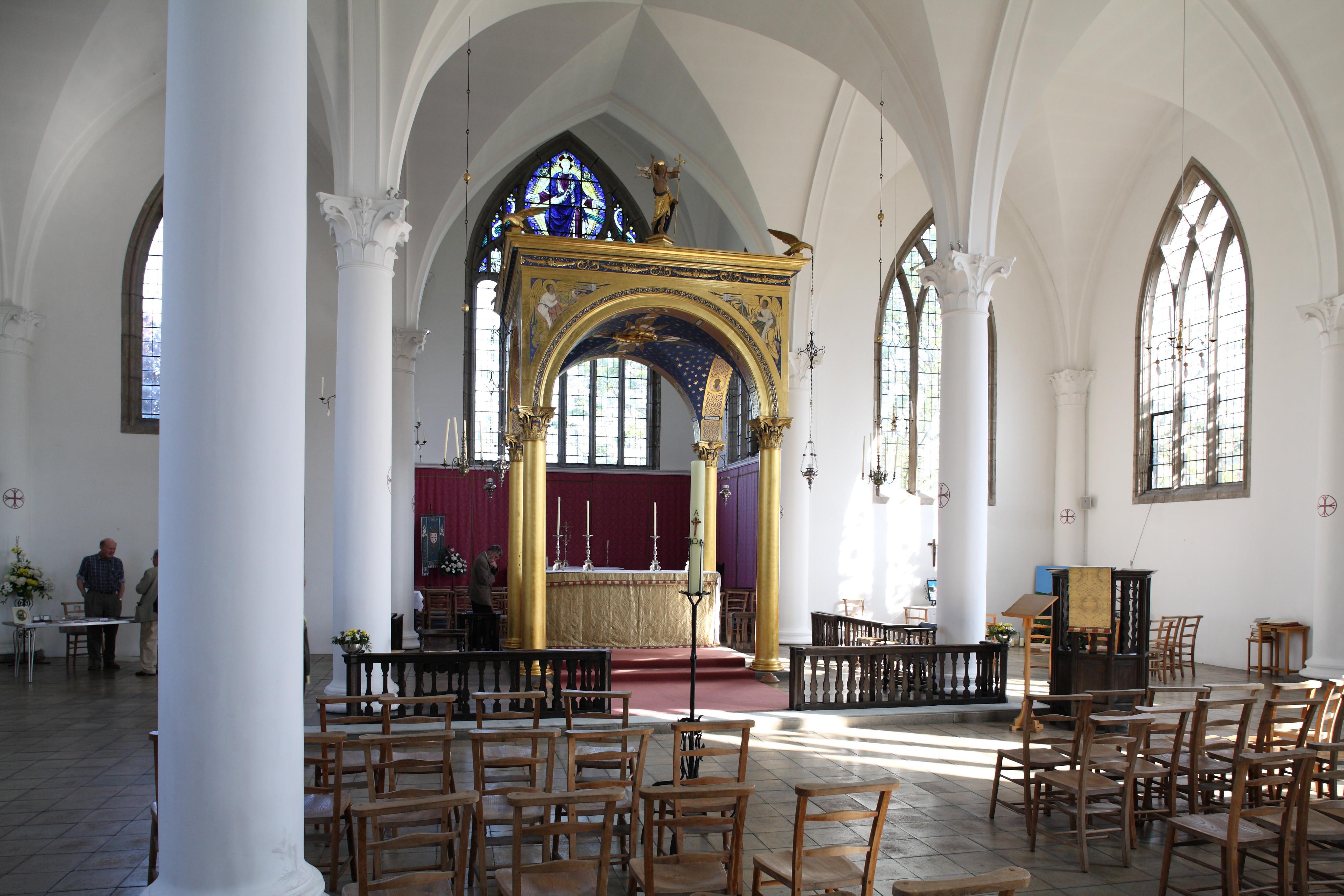St Michael Cornhill
City of London, Greater London
The church lies over the remains of the Basilica, the northern most part of the great Roman Forum built in the first century AD.

St Philip's was designed and built by the famous architect Sir Ninian Comper.
Cosham, Hampshire
St Philip’s church is a very deceptive building; from the outside the appearance is one of uninspiring red brick. However, once inside a very different sight meets the eyes; not without reason has St Philip’s been described as possibly 'one of the outstanding pieces of architecture of the inter war period'. The internal arrangement is one of the first in this country to revert to the older idea of ‘worship in the round’ where the altar is towards the centre of the church rather than separated from the congregation. The central feature is the ornate ‘ciborium’ which focuses attention on the altar.
Take a few moments to look around, taking in the many features included in this simple yet beautiful interior. Entering through the main door you pass under St Philip’s question to our Lord 'Lord, show us the Father'. The answer 'He that hath seen me hath seen the Father' is to be found high up in the east window. Through the door, the whole church is open to view.
Directly in front of you at the end of the central aisle is the font, beautiful in its simplicity. The inscription on the gilded cover is the baptismal formula ‘In the name of the Father, and of the Son and of the Holy Ghost’.
However, without a doubt, it is the heavily gilded ciborium, which is the most outstanding feature of the church. This stands in the midst of a square sanctuary with communion rails of late 17th or early 18th century character all around. Above the ciborium is the figure of the risen Christ. It used to be a popular belief that the figure represented St Philip pointing to the east window to draw attention to the answer to his question.
On the inner vaulting of the ciborium, four angels hold the figure of a dove, the traditional representation of the Holy Spirit. Inside the arches are twelve portraits of the Apostles with an inscription which, translated, reads 'Come, Spirit of Wisdom, Come, Spirit of Understanding and Counsel, Come, Spirit of Strength and Knowledge, Come, Spirit of true Godliness and fear of the Lord'. On the north and south sides of the ciborium are two further quotations, both from John 16 'And I will pray the Father, and he shall give you another Comforter, that he may abide with you forever. I will not leave you comfortless: I will come to you. But ye see me' and 'He that loveth me shall be loved of my Father, and I will love him and will manifest myself to him, and we will come unto him and make our abode with him'.
Turning from the altar and facing west; the imposing organ can be seen. The inscription, from Psalm 150, reads 'Praise him with the sound of the trumpet, with stringed instruments and organs, let everything that hath breath praise the Lord'. On the lower part of the organ are the figures of St Cecilia, the patron saint of music, and St Gregory the Great. The organ itself was built by Harrison and Harrison of Durham, who built it at approximately the same time as their famous rebuild of the organ at Westminster Abbey for the Coronation of George VI.
City of London, Greater London
The church lies over the remains of the Basilica, the northern most part of the great Roman Forum built in the first century AD.
City of London, Greater London
The Dutch Church is a reformed church on the site of the 13th century Augustinian friary, the original building granted to Protestant refugees for their church services in 1550 was destroyed during the London Blitz.
Marshfield, Gwent
Mae Eglwys St Mair, Maerun, yn eglwys brydferth sy’n dyddio nôl i’r ddeuddegfed ganrif. Yn nythu’n glud yn y llain las rhwng Caerdydd a Chasnewydd, mae bellach yn adnabyddus am fod yn lleoliad ar gyfer un o episodau Dr Who!